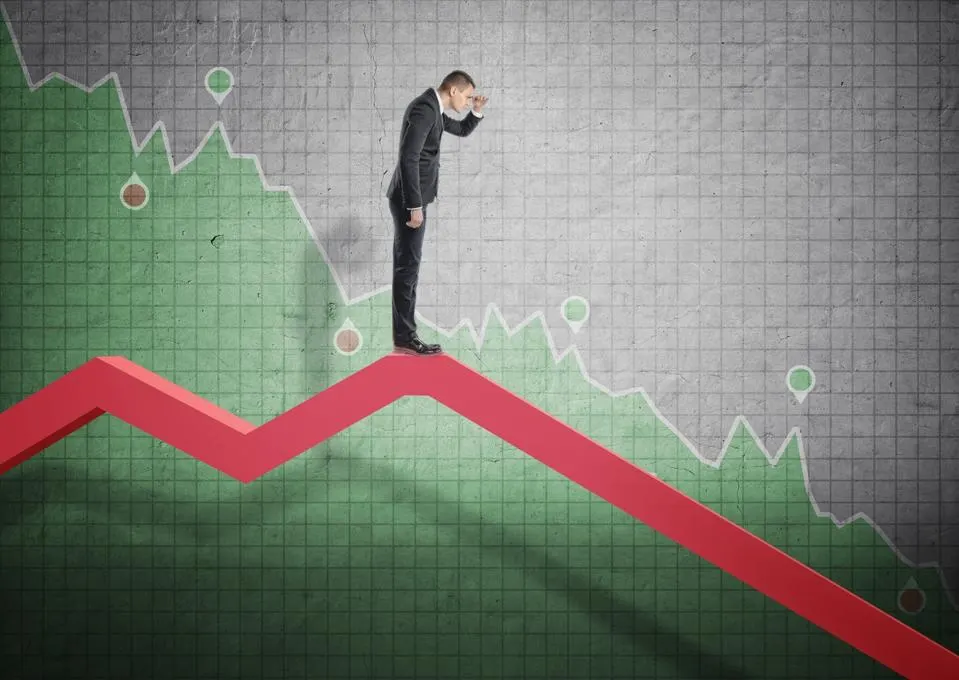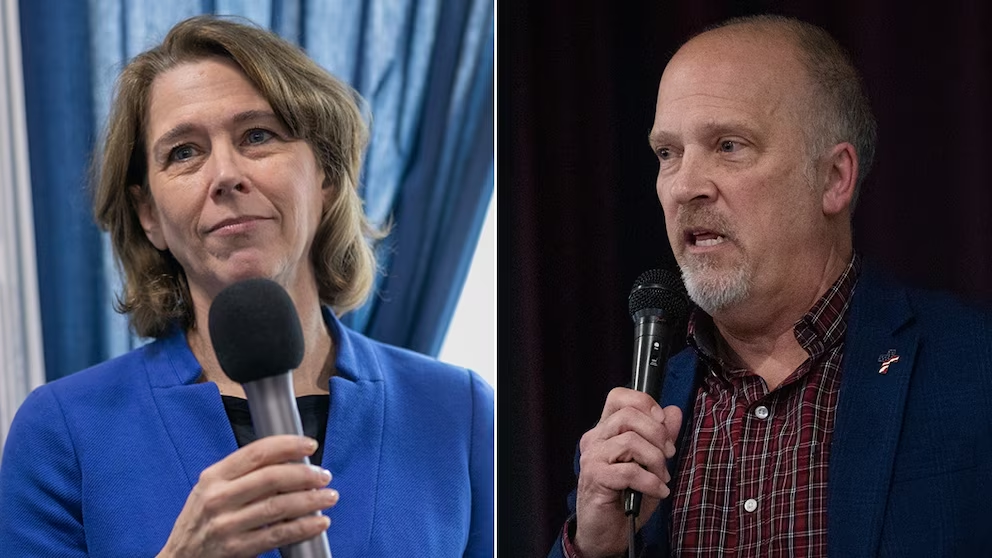Former President Donald Trump has stated that his administration is taking “very big” actions while acknowledging the possibility of a “period of transition” or “disturbance” that could follow.
In an interview that aired over the weekend on Fox News, when asked by Maria Bartiromo about the chances of a recession being one of those outcomes, Trump responded, “I hate to predict things like that.”
Concerns over a major economic downturn have intensified in recent weeks, and on Monday, stocks plummeted following Trump’s remarks, continuing a sharp selloff fueled by worries over how tariffs might affect U.S. economic growth.
But are these recession concerns warranted? Looking at history and the current economic landscape can provide insights into the likelihood of a recession.

What is a recession?
The official definition of a U.S. recession is “a significant decline in economic activity that is widespread across the economy and lasts for more than a few months.”
This definition comes from the National Bureau of Economic Research (NBER), a private nonprofit organization that plays a crucial role in identifying economic downturns. Its Business Cycle Dating Committee is responsible for officially determining key economic phases, including peaks, troughs, expansions, contractions, and recessions.
When assessing whether the economy is in a recession, the committee evaluates three key factors: depth, diffusion, and duration.
Each of these criteria—depth, diffusion, and duration—must be met to some extent, but an extreme shift in one area can sometimes compensate for weaker signals in the others.
Additionally, by the time the Business Cycle Dating Committee officially declares a recession, the U.S. economy is often already in one.
Because of this delay, analysts often look to other economic indicators to predict recessions, though these measures don’t always hold true.
One widely used, though unofficial, recession gauge is the idea of two consecutive quarters of negative growth in real gross domestic product (GDP), the most comprehensive measure of economic activity.
“We have to be cautious with that definition,” Gregory Daco, chief economist at EY Parthenon, told CNN on Monday. “A decline in GDP can result from various factors, including a surge in imports, which may be the case in the first quarter of this year.”
The Federal Reserve Bank of Atlanta’s GDP forecast currently projects a 2.4% annualized decline in first-quarter GDP, marking the first contraction since 2022.
Recently, import activity has surged, and the trade deficit has widened as businesses and consumers rushed to make purchases ahead of potential tariffs from the Trump administration.
The back-to-back GDP decline isn’t always a reliable indicator of a recession. For instance, the U.S. economy experienced consecutive quarters of negative growth in early 2022, but later revisions showed that the second quarter had actually expanded slightly. While those declines sparked concerns, 2022 was ultimately a year of transition as the economy worked to recover from the steep downturn caused by the global pandemic.
Trade imbalances and inventory shifts had a significant impact on GDP figures during the first half of that year, highlighting the limitations of using GDP contractions alone to define a recession.
So, if the rule of thumb isn’t always accurate and the official recession declaration tends to come late, what actually defines a recession?
The NBER committee follows the “three Ds” framework—depth, diffusion, and duration. Meanwhile, Gregory Daco, chief economist at EY Parthenon, uses his own “Triple P” rule: a recession must be “profound, pervasive, and persistent.”
“It can’t just be a minor dip in economic activity,” Daco explained. “It has to be widespread, affecting multiple sectors and regions, and it has to last for a meaningful period of time.”
However, there are exceptions. The Covid-19 recession, for example, was extremely deep and widespread but also very brief.
What About Now? Is a Recession on the Horizon?
In recent weeks, economic warning signs have started flashing as policy shifts under the Trump administration have created heightened uncertainty.
Layoffs have been rising, inflation picked up again last month, and consumer prices jumped at their fastest rate since August 2023. Additionally, February data showed a sharp drop in consumer confidence.
“We’re not seeing clear evidence of an imminent recession, but private sector activity is slowing,” Daco noted. “The labor market is losing momentum, consumers are spending more cautiously, and businesses are taking a ‘wait-and-see’ approach. Uncertainty is high, especially around trade policies.”
Given these factors, there are legitimate reasons for caution, he said.
“There’s no immediate cause for panic about a recession,” Daco added. “We’ve just come out of two years of strong economic growth, with robust income gains, productivity improvements, and healthy consumer spending.”
However, if restrictive trade and immigration policies, along with general uncertainty, persist into 2025, economic activity could slow further, potentially creating stress in financial markets.
One of the most critical factors to watch in the coming months will be the financial health of American households.
“There is currently a lack of clarity regarding policy direction, intentions, and overall objectives,” Daco said. “This uncertainty creates unease within the business community, as there is no clear understanding of where policies are ultimately headed.”






Leave a Reply